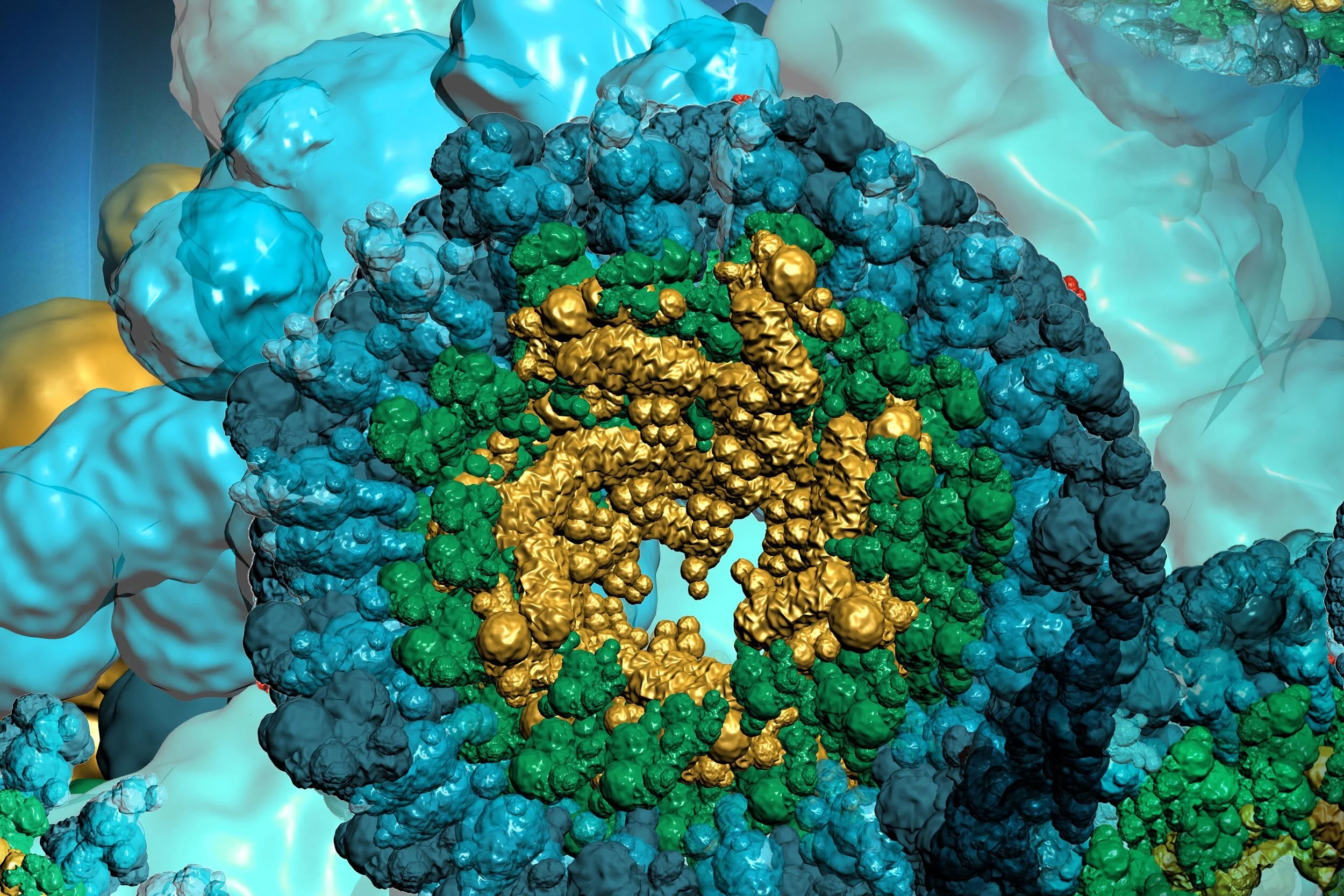Olivia’s paper on the effects of lipid environment on energy transfer in the LH1-RC complex of purple bacteria was published today in JACS. Through a combination of intensive biochemistry and complementary simulations, Olivia and colleagues demonstrated that anionic lipids, especially cardiolipin, are crucial for effective redox cycling in the reaction center, allowing cells to make better use of harvested light.
Congrats to Angie, who defended her thesis on the excited state dynamics of bipyradine complexes and the photosynthetic complex LHCSR1! Angie has been the link between our last generation of spectroscopists and our current set of laser enthusiasts, and her knowledge, expertise, and generosity with her time will all be greatly missed.
By carefully analyzing the results of single-molecule FRET experiments, Mikaila was able to uncover new features of the ligand-dependent conformational signaling in the E. coli aspartate receptor Tar. Her work, which now appears in PNAS, shows that collective geometry of the transmembrane helices is important for signaling, and also demonstrates the efficacy of single-molecule FRET in understanding conformational changes in membrane proteins.
In this paper, our group applied a wide variety of techniques, including Cryo-EM, ultrafast spectroscopy, and complementary simulations to understand the functional implications of the spectrally shifted LH3 light-harvesting complex in purple bacteria. In particular, we found that a previously unreported equilibrium between the two bacteriochlorophyll rings in this complex can enhance the efficiency of energy transport.
Congrats to Paul, who defended his thesis today on advances in photocatalysis using bio-inspired hybrid systems. His impressively wide-ranging knowledge of chemistry and experimental indefatigability made the lab a better place, as did his wise-cracks and similarly wide-ranging knowledge of pop culture.
Please join us in celebrating our most newly minted graduate, Mikaila, who earlier today defended her thesis on conformational signaling in bacterial chemoreceptors. The lab will miss her abundance of knowledge and insight as both a biologist and a spectroscopist, and, of course, we will all miss her warmth, humor, and good cheer. She will continue her scientific journey later this year in Ruben Gonzalez’s lab at Columbia University, and we’re excited to see what she discovers next!
Adrien recently completed his graduate work at the Université de Montpellier on the photophysics of boron nitirides, and will work with Audrey on the SM2P project. Welcome Adrien!
Previously available as a bioRxiv preprint, their paper is now published here.
Our group is tremendously excited to welcome four new chemistry graduate students this fall. Arthur Vard, previously a visiting student to the lab from EPFL, has finished his Masters there and now reprises his role in the ultrafast lab. Daisy Ludlow, a graduate this year of BYU, is also joining the ultrafast team. Abigail Chapman, from UCLA, and Lucas Bartel, from UW Madison (go Bucky!), are talented additions to our corps of single-molecule spectroscopists. We look forward to all of the great science these four will be doing over the next several years!
Congratulations to Steph for this prestigious honor! Having graduated this summer, she is now starting a post-doc in Naomi Ginsburg's lab at UC Berkeley.
Shwetha defended her thesis on the conformational signaling of EGFR and heads off to Stanford to start her post-doc this fall.
You can read Shwetha and colleagues’ in-depth investigation of signaling in monomeric EGFR here in Nature Communications.
Steph Hart and Olivia Fiebig are the Schlau-Cohen lab’s newest-minted Ph. D.s! They are now both headed to future success in postdoctoral positions, Steph at UC Berkeley and Olivia at Penn State.
Prem uses single-molecule methods to dissect how LHCSR adopts different conformations for different photophysics. Read the full article here. Congrats Prem!
The latest paper on altering the spectral properties of strongly coupled dimers in a DNA tile by changing their geometry has been published in The Journal of Physical Chemistry Letters, here. Congrats Steph!
Welcome to visiting masters student Arthur Vard, coming all the way from EPFL in Switzerland.
The latest paper on SM2P of the cyanobacteria light-harvesting subunits APC and CPC has been published in Nature Chem, here. Congrats Ray, Audrey, and Toru!
She will receive the Margaret Oakley Dayhoff Award for “elucidating structural and energetic dynamics of biological and bio-inspired systems through her innovative applications of spectroscopic methods”.
Gabriela was selected for the 2022 ACS Pure Chemistry Award!

